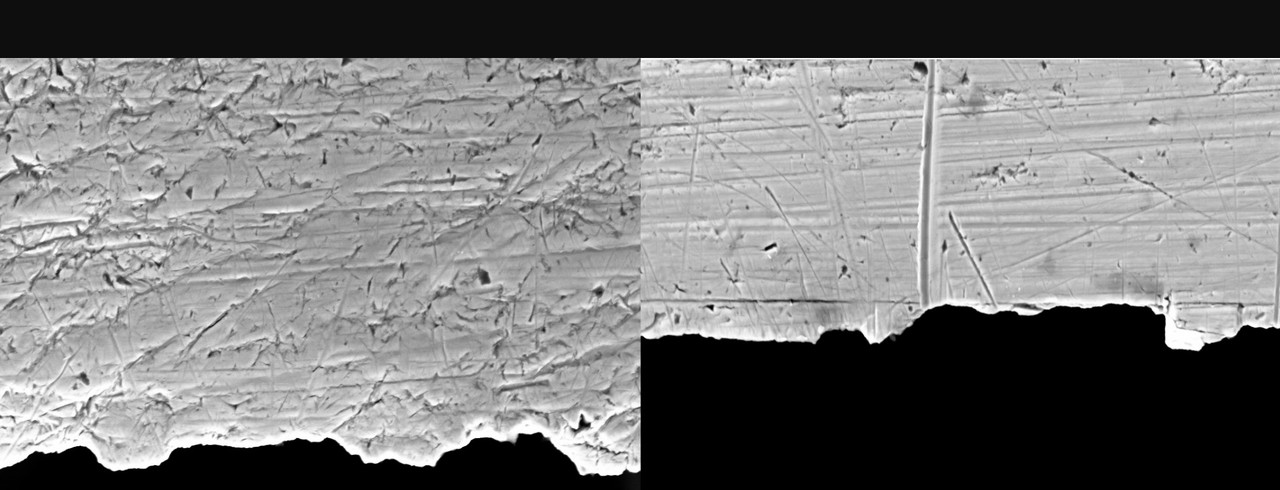It`s not totally flat but I stand corrected Mr. Wizard and Cementite.
Thanks for the vote of confidence
 Kbrasmodeler
Kbrasmodeler
.
Shall we just agree to disagree like in a Classical Greek philosophy engagement ?
Next time I am going to get an insanely sharp axe out of the shed at HRC 52 and get my beard off.
I am not taking the piss, i am simply pointing out that it is simply "pointless" and does not hold an edge.
Oh by the way I have forged 700 knives since 1979 in Blackburn and Wetherby UK and lived upstairs in a forge for five years where I made a lot of carbon sickles, axes and hatchets for Yorkshire farmers that wanted to get fit and freaky save the Whale girls from Haugsund, Norway (where I lived) and Hull, North Yorkshire.
I lived in a forge in the centre of the village - no running away from that - Kirk Deighton - about 13 miles to Leeds.
Went to Grammar school in Knaresborough on the river Nidd and met tens of blacksmiths before 1980.
Then I got an OND and HND in metallurgy, metalwork and welding including pattern welding.
My main book was from 1880`s - English blacksmith - name escapes me.
Then, as a hobby in Hong Kong and Macau, China I forged mostly Asian knives, sickles axes and hatchets in mainly Aogami #2 and Shirogami # 1 hitachi billets but I also made steel from iron sand after 15 years when my reject rate went below 5% in a 150 year old forge with no electricity - I am not kidding - but I am still learning and did about 100 stainless and semi-stainless "sharpies"
I had to learn differential hardening - I had no choice.It took me over 15 years to learn.
My Mecanese was terrible.
I am definitely broad-minded and will consider alternative points of view.
I have been a systems analyst since 1980 for ICL computers and international sales rep for Sugden in Heckmondwike selling Hi-Fi`s in 62 Countries, Lived in ten Countries had 4 passports plus I have two degrees in phytopharmacology and parapolitics in Exeter and Preston respectively from the mid eighties.
And I still feel stupid - the subjects are huge.
Oh I forgot to mention I have family in Guangzhou and have connections in my Manchester - Chinatown Chamber of Commerce so I have my finger on the pulse plus the
ir access to CATRA labs in Sheffield etc plus the uni there and applied industrial sponsored projects therein in conjunction with RIO material sciences - Hallum they are having a post industrial renaissance.
This is the shadow of the invention of stainless steel and crucible steel Worldwide and the university/industry collaborations even since the last quarter of a Century.
I have a friend just down the road from me that has a postgraduate advanced metallurgy MMet and he leaves me standing.
I only got into blacksmithing to de-stress from a high pressure sales job and integrate into China.
It was ironic that my cousin did not know I lived in China for nearly 20 years because we were out of touch for nearly 20 years and have only recently got reacquainted - I just went there on business doing exhibitions for three days so I hardly knew anything initially.


